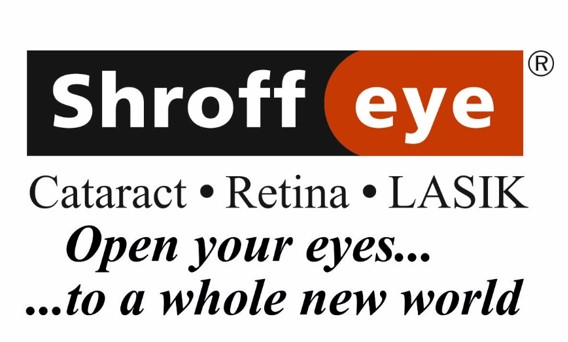Shroff Eye Hospital is India's First Eye Hospital accredited by the Joint Commission International (USA) since 2006. Shroff Eye is also India's first and only Wavelight Concerto 500 Hz LASIK center. Shroff Eye has stood for excellence in eye care since 1919. A firm commitment to quality is at the heart of all services provided at our centers at Bandra(W) and Marine Drive, Mumbai.
Diagnosis, treatment, cure and prevention.
Computers are now a way of life, something that you cannot do without. As the number of people working on computers continues to grow each year, the number of people encountering temporary vision problems due to computer use also increases. Computers do not harm your eyes, but often cause temporary problems.
People work, study and do countless other things all on the computer these days. The long hours of exposure to the computer screen leads to a decrease in blinking reflex. This means that while working using a computer, looking at the computer screen, we tend to not blink as often as we normally do.
The normal blink rate for the eye human eyes is 16-20 per minute. However, research has shown that while using a computer, the blink rate reduces to 6-8 per minute.
When you look in the distance, your eyes are relatively relaxed and at rest. The characters seen on computer screens lack contrast or well-defined edges compared to printed characters. Thus, it becomes difficult for one to constantly remain focused on the characters. Refocusing continuously on these characters is known to cause eye fatigue, monitor eye strain, CVS pinkeye, and burning. Improper lighting conditions are known to further aggravate the problem of CVS.
Dry eyes can also occur because we tend to blink less as we concentrate on our computer screen and keep our eyes wide open when working at the computer, resulting in drying up of the tear film.
Squinting while looking at a computer screen is not only uncomfortable, it can lead to dry eye. This is because squinting causes people to blink less often, and the less you blink, the more you experience aches, burning and sensations of dryness, irritation and tearing in your eyes.
In fact, squinting even cuts your blink rates in half — from 16-20 blinks a minute to 6-8 blinks a minute to only four blinks per minute.
It is important to note that neck and shoulder pains occur mostly due to ergonomic problems i.e. when the body position or stance is improper while using the computer.
Many reasons can result in this condition – causes of computer vision syndrome: s
- Poor position in relation to the computer.
- Lighting that produces glare or reflections, fuzzy images or images that are too dim or too bright.
- Failure to blink often enough to moisten the surface of the eyes.
- Use of glasses that are inappropriate for the user’s position and distance from the screen.
- Minor visual defects such as astigmatism that might go unnoticed unless intense computer use exaggerates them.
The following steps can help alleviate your symptoms – prevention of computer vision syndrome:
- Lower your computer screen so that the centre of the screen is 4-8 inches below your eye level and at a viewing distance of 20-28 inches.
- Use a document holder placed next to your computer screen. It should be close enough so you don’t have to swing your head back and forth or constantly change your eye focus.
- Change your lighting to lower glare and harsh reflections. Glare filters over your computer screen can also help
- If you are seated in a draught or near an air vent, try to change your seating or position and direct the draught away from your eyes.
- Low humidity or fumes aggravate a dry eye condition.
- Concentrate on blinking whenever you begin to sense symptoms of dry or irritated eyes.
- Take frequent breaks. Follow the 20-20-20 rule. This simply means every 20 minutes, look away beyond 20 feet and blink 20 times.
- Use artificial tears as recommended by your doctor to re-wet and lubricate your eyes.
Treatment, Ergonomics for Computer Vision Syndrome
As much as this is a very common disorder affecting millions who use the computer everyday, there are many easy ways to correct it.
The major issue caused by CVS is that it is known to reduce worker productivity. Eye fatigue and eye strain leads to slowing down in the workflow and this can lead to less work getting done. CVS may also lead to mistakes being committed more regularly while working.
The methods to treat CVS are numerous, all depending on the extent of the problems caused by it. In most cases, reduced work productivity is corrected by the use of better ergonomics.
However, ergonomics is only known to minimize Computer vision syndrome, and it does not solve the vision problems caused by CVS completely.
For this purpose, special computer eye glasses are available and prescribed by ophthalmologists. This is discussed in further detail in the Computer Eye Glasses section
While complaints of eye fatigue and discomfort are common among computer users, these symptoms are not caused by the computer screen itself. Computer screens give off little or no harmful radiation (such as x-rays or UV rays). All levels of radiation from computer screens are below levels that can cause eye damage such as cataracts. Fatigue, dry eyes, bad lighting, or how you sit in front of the computer can cause eyestrain. Symptoms of eyestrain include sore or irritated eyes and difficulty focusing. You may also have symptoms of eyestrain if you need glasses or a change in your glasses.
Talk to your ophthalmologist if you suffer from any of these symptoms as you may benefit from a simple prescription.
Call us for computer vision syndrome treatment including diagnosis, prevention and cure in Mumbai India






